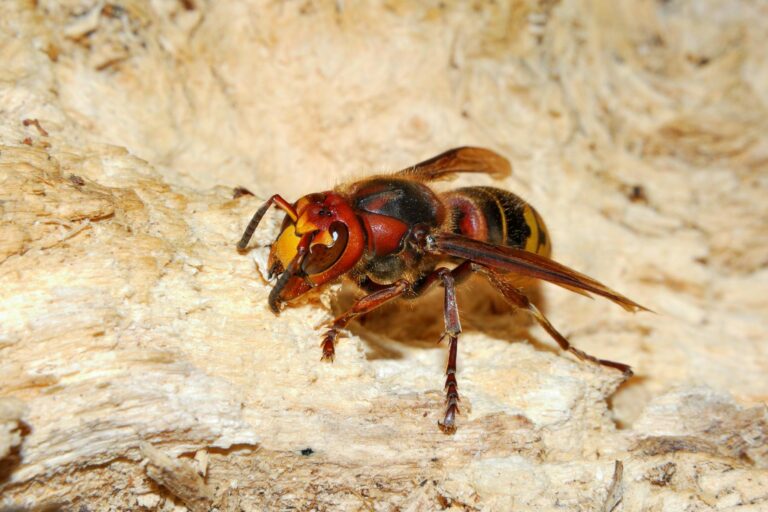Vespa crabro

Vespa crabro is characterized by a red coloring on the thorax and the first segment of the abdomen. Queens can reach a size of up to 35 mm, workers up to 25 mm, and males up to 28 mm. The European hornet mainly inhabits open deciduous forests and forest edges. Nests are built in dry, hollow trees and can reach a height of up to 60 cm. Bird nest boxes are also used for nesting. A colony can consist of up to 1700 individuals (eggs, larvae, pupae, and adults). A previous decline in population may be attributed to the use of insecticides or the removal of nests by humans (Tischendorf and Nowack 2015).
Diet: Hornets can often be observed on flowers during the summer. They feed on nectar, fallen fruit, and prey on dipterans and other vespoid wasps (Tischendorf and Nowack 2015).
Conservation status: The European hornet is listed as a “specially protected species” in the Federal Species Protection Ordinance (BArtSchV), being the only vespoid wasp species with this designation.
-
Tischendorf, S & Nowack, S (2015)Atlas der Faltenwespen Hessens. Gießen: Hessen-Forst FENA. 260 S.